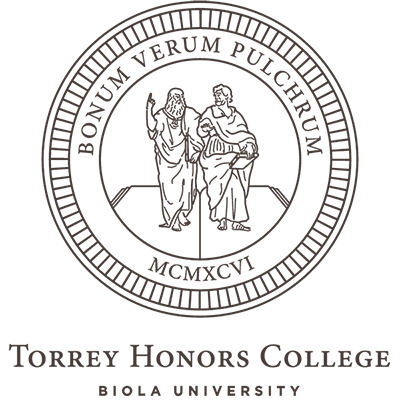A scene from The Canterbury Psalter (12th century)
Blog
How to Have Already Met the Holy Spirit

In the first chapter of The Holy Spirit: An Introduction, I describe how “the overall pattern of scriptural revelation is that the Holy Spirit’s presence becomes clear at the end of the process but then turns out to have always already been there.” The spiritual point is that we never quite get “introduced” to the Holy Spirit as a total stranger, but as someone who has already been present to us and active on us. When he opens our minds to his presence, we may feel deep things stirring within our hearts, bringing up half-remembered glimpses and partial awareness that Something or Someone has been with us for some time. Here’s one way I say it in the book:
He sometimes seems to us to be introduced late, like some kind of an afterthought. But God has no afterthoughts. What he apparently has is unstated presuppositions, which he gladly leads us into a later awareness of. And that is how we have seen the Bible directing us to encounter the Holy Spirit, never as the Holy Afterthought but always as the Holy Presupposition. (27)
And then I ask:
Why does the Holy Spirit do everything, but withhold direct teaching about himself until late in the history of revelation? If it is in fact God’s design for us to come to full knowledge of the Trinity in this structured way, why is this his design? Why is the work of the Holy Spirit so foundational from the very beginning but left so relatively anonymous until its conclusion? Why does God do it this way? (30)
I answer that question in the book, but in my first draft of the manuscript I also went on to illustrate it further by analogy. Since I liked the analogy, but ended up cutting it just in order to get the word count lower, I wanted to share it here. So, a parable.
One of C.S. Lewis’ favorite books was The Faerie Queene, an Elizabethan epic by the poet Edmund Spenser (1552‑99). Lewis knew that modern readers faced some obstacles in reading the book. Not only is it a long and complicated story (really a nested or concatenated set of stories), but it had been over-explained by commentators. Literary critics tended to make laborious connections between the book’s characters and the social or political events of Spenser’s time: they identified his sources and influences from previous epics; they drew out the philosophical underpinnings, plumbed Spenser’s allegory, directed attention to the rhythm and meter of his compositional work, and even charted how the various parts fit together. All of these operations are permissible. Lewis himself undertook some critical work explaining The Faerie Queene.1 But all of these approaches “demand from us a sophisticated, self‑conscious frame of mind,” and Lewis knew that the Faerie Queene itself
demands exactly the opposite response. Its primary appeal is to the most naive and innocent tastes: to that level of our consciousness which is divided only by the thinnest veil from the immemorial lights and glooms of the collective Unconscious itself. It demands of us a child’s love of marvels and dread of bogies, a boy’s thirst for adventures, a young man’s passion for physical beauty. If you have lost or cannot re‑arouse these attitudes, all the commentaries, all your scholarship about ‘the Renaissance’ or ‘Platonism’ or Elizabeth’s Irish policy, will not avail.2
One solution Lewis came up with for this problem was to swipe some of his favorite elements from The Faerie Queene and work them into his own fairy tales. Anyone who grows up reading The Chronicles of Narnia and then turns to Spenser will find little echoes and appropriations scattered around, beginning with an impressive guardian lion. But Lewis also longed for his students to come to the reading of Spenser from somewhere far away in space and long ago in time, bringing with them unfathomable recollections. Here is his slightly tongue-in-cheek advice for how to read The Faerie Queene:
Beyond all doubt it is best to have made one’s first acquaintance with Spenser in a very large ‑‑and, preferably, illustrated‑‑ edition of The Faerie Queene, on a wet day, between the ages of twelve and sixteen; and if, even at that age, certain of the names aroused unidentified memories of some still earlier, some almost prehistoric, commerce with a selection of ‘Stories from Spenser’, heard before we could read, so much the better.3
I know: it’s already too late to have started this way, right? You can’t go back in time and schedule a rainy day encounter with a big book in solitude. But I think Lewis’ real point is not the biographical one, but something about the primal character of Spenser’s work itself. It is suffused with archetypal stuff appropriate to the young mind that doesn’t have its defenses up yet. It digs deep, deeper than the too-clever English Lit grad student can dig if all they’ve got is the tools of sophistication and distance.
The best adult insight into Spenser, Lewis knew, would be that of a reader who recognized in his book something he had always already known, or half-known, or been influenced by, from time immemorial. Such a reader would not only be instructed and informed about important matters, but would be stirred to the depths, understanding that what he was just beginning to understand is something that he had never been altogether without.
We might say that God the Holy Spirit pursues a similar strategy in making himself known to us. In Scripture and in experience, he makes himself known to us with careful preparation, in a deliberate, well-ordered sequence. By the time he dawns on us, we are already surrounded, and have been from time immemorial. “When we meet this person, this someone we already know, we look back on our whole course of Christian instruction and realize that our path, our experience, the Bible we read, and our knowledge of God in Christ have always already been haunted by the Holy Ghost.”
_________________________________
Image: Jessie Willcox Smith‘s 1905 illustration for Robert Louis Stevenson’s A Child’s Garden of Verses, via Wikimedia Commons. I was looking for an illustration Stevenson’s “Land of Counterpane,” but couldn’t find a suitable one.
1See Lewis and Fowler, Spenser’s Images of Life, 1967.
2Lewis, “Edmund Spenser 1552‑99” in Studies in Medieval and Renaissance Literature, 121‑145; at 132‑3.
3Lewis, “On Reading ‘The Faerie Queene,'” in Studies in Medieval and Renaissance Literature, 146‑148; at p. 146.
About This Blog

Fred Sanders is a theologian who tried to specialize in the doctrine of the Trinity, but found that everything in Christian life and thought is connected to the triune God.


